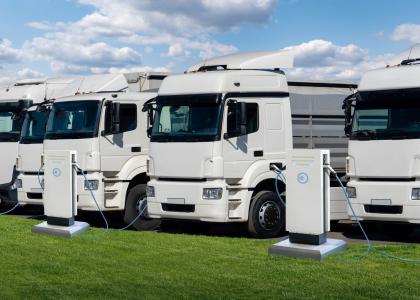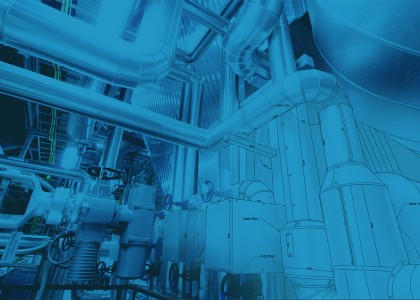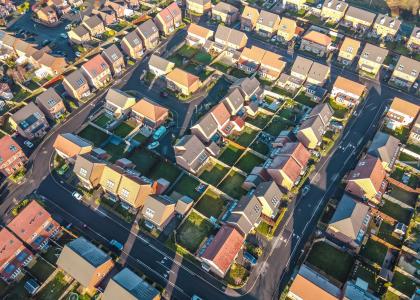Key findings
|
Growing and training a workforce with the skills to perform residential building decarbonization jobs is necessary for improving the energy efficiency and resiliency of homes in the United States. Recent federal and local building decarbonization commitments and actions are increasing the demand for energy auditors, HVAC technicians, heat pump installers, electricians, and constructions workers. Between 2022 and 2023, 74,700 new energy efficiency jobs were added, increasing the total workforce in this sector to 2.3 million.
However, too few programs help individuals learn about and prepare for these jobs. To respond to this demand and ensure that workforce education and training meet the needs of employers and provide professional development to workers, investments in the energy efficiency workforce development ecosystem are necessary. The ecosystem of interconnected stakeholders—including workforce and education organizations, government agencies, credentialing agencies, policymakers, utilities, lenders, organizations providing wraparound services and soft skills, employers, and the learners—needs to work cohesively to grow a robust workforce that can advance decarbonization efforts.
This report summarizes findings from interviews with 35 workforce experts, provides an overview of common workforce challenges, and profiles programs with demonstrated success in expanding the residential workforce. Additionally, it highlights actions that stakeholders in the energy efficiency workforce ecosystem (e.g., government agencies, utilities, training institutions, and community-based organizations) can consider as they prepare and train workers to deliver decarbonization projects that help homes reduce greenhouse gas (GHG) emissions.
Existing programs demonstrate strategies to grow the workforce
We found five common challenges that hinder the growth of a residential retrofit workforce. Case studies in the report offer strategies that program administrators can consider when designing and implementing programs to overcome existing challenges. For example, an energy auditor pre-apprenticeship program in West Virginia helps overcome negative perceptions about clean energy jobs by offering trainees hands-on experience and exposure to real-life job scenarios. Table ES1 highlights the workforce challenges and the strategies to address them.
Table ES1. Commonly discussed challenges and strategies to grow the workforce from program case studies
| Challenges | Strategies |
|---|---|
| Low awareness and negative perceptions about careers |
|
| Shortage of programs that integrate technical skills, soft skills training, employer needs, and market demands |
|
| Insufficient skills due to lack of access to standardized technical curricula |
|
| Inadequate support for access to new jobs, professional development, and career advancement |
|
| Burdensome contractor licensing requirements and business practices |
|
Stakeholders need to act now to expand the workforce
In addition to the existing strategies modeled by workforce programs, we propose immediate actions for utilities, government agencies, training institutions, and others to develop an effective energy efficiency workforce development ecosystem as they design and implement programs to respond to residential sector decarbonization needs. Employers will play an integral role in growing the workforce as they can advise on designing trainings to meet market demands and help establish pathways to jobs for program graduates. Stakeholders can consider the following to strengthen workforce skills and overcome the five identified challenges:
- Standardize knowledge and skills across residential decarbonization occupations. Government agencies at the federal or state level, employers, and industry and labor organizations can influence the direction and design of training for jobs needed to decarbonize the residential building sector. For example, the Pacific Northwest National Laboratory (PNNL) created training materials for new technologies, such as heat pumps, and has centralized available resources.
- Increase awareness of different energy efficiency careers for existing and future workers. Government agencies, nonprofits, industry and labor organizations, training institutions, and utilities will need to engage K–12 students and individuals from underrepresented communities to help diversify the workforce, and reach out to incumbent workers to highlight opportunities to acquire new skills and contribute to decarbonization goals.
- Integrate technical education, soft skills training, and support services in programs. Utilities, nonprofits, and labor and trade organizations that provide workforce training must collaborate with employers and community organizations to offer a balanced approach to technical and soft skills training that reflects the skills needed for the available jobs and serve the prospective employer’s hiring needs. Community organizations can provide supportive services for new entrants to join the industry, earn competitive wages, and advance in their careers.
- Invest in trainee or employee career development initiatives. Utilities, manufacturers, lending institutions, and nonprofits should support career development activities that help motivate and support professionals to enhance their skills and career. For example, networking opportunities for trainees can help them learn about industry jobs and their responsibilities, access coaching and employment placement services, or explore training that can help advance their careers or update their skills to maintain their existing employment.
- Address contractor licensing and needs through training and financial resources. Stakeholders, including government agencies, nonprofits, utilities, training institutions, community organizations, manufacturers, and lenders like green banks that finance energy efficiency projects, will need to create resources to prepare contractors and enable them to deliver projects. For example, favorable lending terms to cover the upfront contractor costs can encourage them to accept jobs that accelerate decarbonization efforts or to pursue related training.
Download the Research Report
| Suggested Citation |
Srivastava, Rohini, Roxana Ayala and Alex Aquino. 2025. Building a Workforce for Energy-Efficient Homes. Washington, DC: ACEEE. www.aceee.org/research-report/b2501. |






